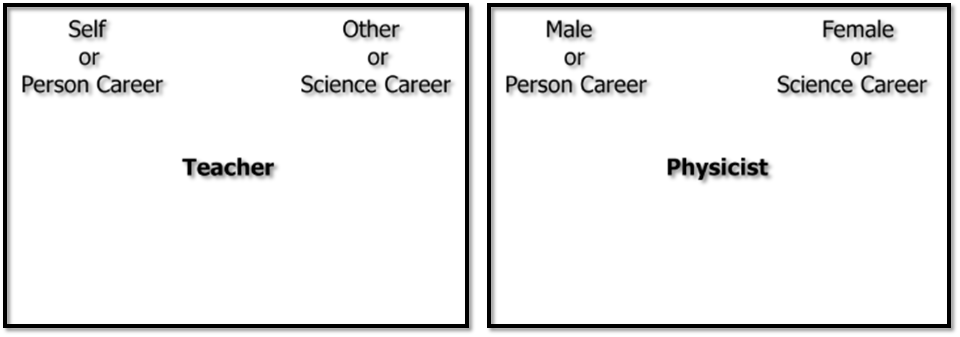Once upon a time (not that long ago), it was widely assumed that most women just didn't have what it takes to be scientists or mathematicians. Most people now know that this isn't the case. Girls and women often outperform boys and men in math and science classes and some women do become famous engineers. And yet fewer women than men still pursue careers in science, technology, engineering, or math (STEM) fields. The gender gap in STEM is a problem for women, who may limit themselves to certain career options due to stereotypes that women don't belong in STEM. And unfortunately, a lack of diversity in the STEM workforce also translates to a lack of diversity of ideas in these fields, which may limit technical innovation as well.
Identifying barriers to women's participation in STEM fields is important. Better understanding of these barriers could lead to interventions that create greater occupational opportunity for women and racial minorities (who face similar issues) and foster greater diversity of ideas in areas that matter to society.
I wondered whether women who choose STEM majors are more likely to associate themselves automatically or unconsciously with STEM compared to women who choose more traditional majors. These mental associations could be one barrier that influences women's participation in STEM, and therefore might provide an opportunity for intervention.
Implicit Associations of Women in STEM
Implicit associations are fast, automatic, or unconscious connections people make in their minds between two mental concepts. They are called "implicit" because people may be unaware that they have these associations. As a result, they can be difficult to measure.
Implicit association tests (or IATs) are the best available measure of these elusive "unconscious" associations according to research. People taking an IAT see words representing a concept such as "female," such as a typical female name like "Emily," and then respond as quickly as possible, matching the word to one of two pairs of categories they might (or might not) associate with it, such as "science career/male" or "person career/female." They do this repeatedly during an experimental session, with varied combinations of the categories and target words. When people have implicit associations between categories in a pair, they respond faster when the target words match both categories in that pair. Although the differences are small (measured in thousandths of a second), they reveal the connections our brains make to categories.

I used the IAT to measure associations between the self and others ("me" or "them") and STEM careers. Scores on this IAT provide a unique index of unconscious self and career stereotypes. My study involved 240 women at different stages of their college experience who completed an online survey, including two IATs as well as questions about their STEM educational experiences and their explicit (i.e. openly acknowledged) associations between gender and STEM careers.
Women majoring in STEM had stronger implicit associations between themselves and STEM careers, as measured by a self-career IAT, than did women in female-dominated majors, specifically those that prepare students for careers that involve working with or helping people. In addition, STEM women also had weaker male-STEM career associations, as measured by a second IAT that measured the relative strength of associations between male and female gendered names ("Emily" or "Benjamin") with these same careers. Differences on both IATs emerged in first-year as well as third- and fourth-year students, suggesting that implicit associations were present before women started college, and therefore may have influenced their career plans from the start.
Further, these implicit associations were related to parents and teachers "pushing" STEM throughout childhood and adolescence. Women in STEM majors were more likely to have had parents or teachers who encouraged them in science and math, while also introducing more "hands-on" activities or math and science information with real-world applications. And these same women had stronger self-STEM career and weaker male-STEM career associations. These findings suggest that early support for STEM might shape STEM implicit associations, which in turn affect women's choice of college major.
Finally, and somewhat unexpectedly, results for explicit associations in this study were the opposite of the findings for implicit associations. Explicit associations are more consciously accessible connections that people make when asked directly about them. Women in STEM majors held stronger traditional explicit gender-STEM associations than women in female-dominated majors, and these differences were greatest for students further along in college. In other words, while women who choose STEM implicitly associate themselves with STEM, they are still very aware that men are more likely to work in science, technology, engineering, or math. Nevertheless, they persist!
How Can Implicit Associations Be Used to Engage More Women in STEM?
This study suggests that women's implicit associations between themselves, their own gender, and STEM careers may influence their educational and career decisions, and that early positive experiences and support in STEM likely play a role in the development of these associations. Although short-term interventions rarely change people's existing implicit associations, interventions focused on encouraging young girls' interest in science and math throughout their school years are likely well-timed and long-lasting enough to shape implicit associations between the self and STEM. Parents and educators looking to encourage girls into the exploration of STEM fields should seek and support these programs as part of their efforts.
My results also suggest that the IAT test could be used to assess the effectiveness of these early interventions. Educators aiming to encourage women to seek STEM careers would be wise to include IATs as measures to evaluate the effectiveness of their efforts.
For Further Reading
Dunlap, S.T. & Barth, J.M. (2023). STEM Identities and Gender-STEM Stereotypes: When and Why STEM Implicit Associations of Women Emerge and How They Affect College Major Choice. Sex Roles, 89, 19-34. https://doi.org/10.1007/s11199-023-01381-x
Dunlap, S.T. & Barth, J.M. (2019). Career stereotypes and identities: Implicit beliefs and major choice for College Women and Men in STEM and Female-Dominated Fields. Sex Roles, 81, 548-560. https://doi.org/10.1007/s11199-019-1013-1
Greenwald, A.G., Banaji, M.R., Rudman, L.A., Farnham, S.D., Nosek, B.A., & Mellott, D.S. (2002). A unified theory of implicit attitudes, stereotypes, self-esteem, and self-concept. Psychological Review, 109, 3-25. https://doi.org/10.1037/0033-295X.109.1.3
Sarah T. Dunlap is a Research Associate at the Institute for Social Science Research at the University of Alabama and studies factors that influence women's career choices.




